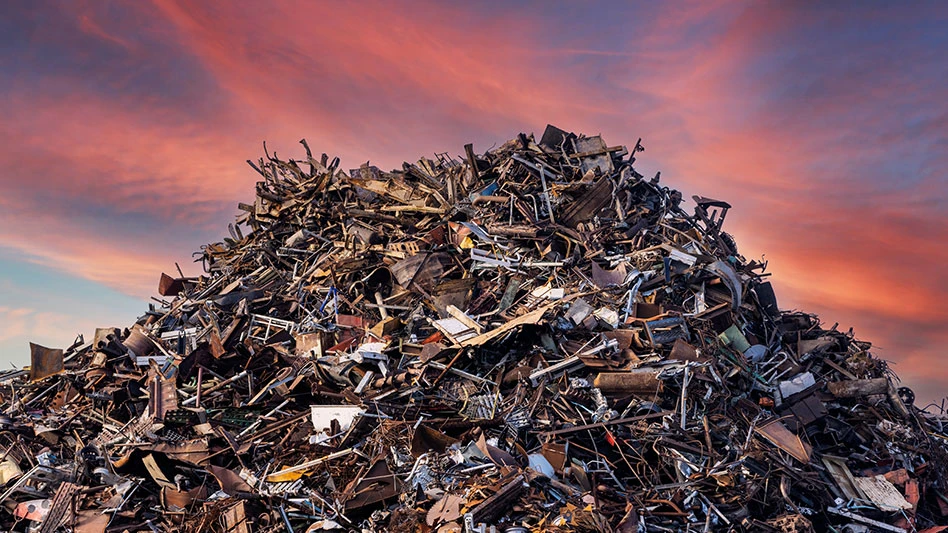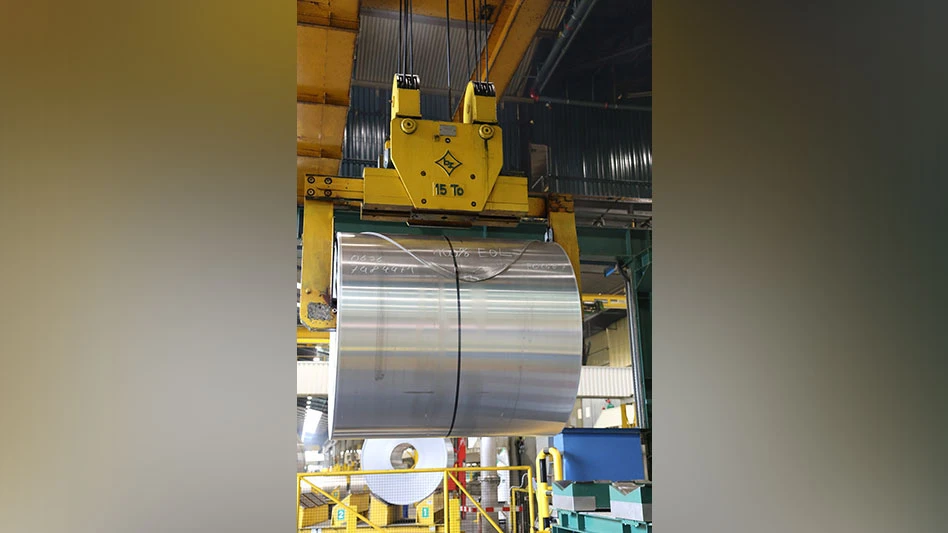Only a few years ago, the continued viability of domestic consumers of copper scrap was in question. As a last-gasp effort around two years ago, two organizations representing the domestic copper and brass foundry industry petitioned the U.S. Commerce Department to restrict copper scrap exports. When this request was denied, many felt that the domestic copper industry would continue to decline.
This bleak outlook was exacerbated by the relentless purchasing from Chinese consumers. Additionally, a host of reports estimated that the new copper supply would be muted in the short term in light of the lack of new mining capacity coming on line. The confluence of these events has pushed copper scrap prices to record highs, and all historical patterns seem to have been thrown out the window.
However, despite continued strong demand from Chinese buyers who are purchasing significant blocks of copper, the domestic copper industry is surviving and, according to many people, thriving.
IMPROVED POSITION. Tim Strelitz with California Metal-X, a Los Angeles copper and copper-nickel alloy producer, says that the copper industry is doing better now than it was four years ago. The domestic copper industry has benefited, as have others, from the boom in the world economy, which has boosted demand for finished product.
While markets are good, Strelitz, who is scheduled to give a presentation at the 2006 Institute of Scrap Recycling Industries Inc. (ISRI) Convention and Exposition in Las Vegas in April, notes that his company has been able to grow its business by relying more heavily on technology and automation and less on employees.
"Smart foundries and smelters will review their business and look to automate wherever they can," Strelitz says.
But automation can only go so far. When competing with low-cost overseas producers, domestic copper consumers have to rely on strong end markets. The U.S. government is not likely to step in to protect the domestic copper industry, meaning domestic copper consumers must take steps to ensure the short- and long-term viability of the industry.
For now, Strelitz, like other copper products producers, says that, barring any unforeseen crisis, the rest of this year should be pretty robust for the copper industry, with strong domestic and overseas demand keeping raw material and finished products flowing steadily.
While many industry observers say that the short-term view for domestic copper smelters, foundries and ingot makers is promising, that hasn’t stopped others from continuing to point an accusatory finger at China.
Joseph Mayer with the Copper and Brass Fabricators Council, a copper industry group based in Washington, D.C., cites several ways in which the domestic copper industry is at a distinct disadvantage compared to Chinese consumers. Chief among them is the advantage that Chinese copper consumers have gained from their country’s currency policy. Mayer, as well as many others, says the Chinese government is keeping the value of the renminbi artificially low.
While legislation has been proposed in the U.S. Senate that would address the issues surrounding currency manipulation, it is highly unlikely any changes will result, according to industry observers.
One Ohio-based scrap recycler says that a big problem with some Chinese consumers of copper scrap is that they don’t care about the quality of the material they purchase. Labor costs for sorters are lower there, and Chinese buyers can pay a premium for material that is of lesser quality.
Despite this issue, several domestic copper producers are taking steps to ride out the market. Several of them say that the burgeoning Chinese infrastructure will require more copper products that will remain within the country, which could eliminate some of the competition for end markets.
But several copper producers say that it is becoming more challenging to compete with Chinese suppliers on pricing for lower-value finished products, such as brass fittings.
Rik Kohn, with The Federal Metal Co., a Bedford, Ohio-based brass and bronze ingot manufacturing company, looks at the current prices being paid for copper scrap and asks a question few do: Have the copper market’s dynamics permanently changed, with higher prices being the norm? The situation is similar to that of oil, Kohn says, which jumped far above its historic levels and now moves around $60 per barrel.
Kohn asks, "Is this a blip on the radar screen, or are we entering a new world order?" He adds, "We need to ask these questions."
If the copper market has fundamentally changed, the domestic industry has to figure out what it needs to do to survive.
Pricing volatility is changing the approach many domestic copper consumers are taking in regard to purchasing. "We need to buy scrap when it is available," Kohn says. When there is a lack of supply for one grade of copper, companies must be able to use another grade of material.
While prices continue to show volatility, it is becoming more challenging for all parties involved to set up coherent purchasing agreements. Some suppliers may be reluctant to commit to a certain price when pricing levels change on a daily basis.
As for end markets, while recognizing that the overall market is good, Kohn also sees much of the lower-value copper markets going toward low-cost importers. "Fittings are going away. We are looking to go to the high end of the market." This may include more reliance on the aerospace industry as a consumer of the material.
As for adding further automation to improve efficiency, Kohn is less optimistic about this, at least for The Federal Metal Co. "Our side of the industry is pretty low tech," he says. "The key is to work harder."
VOLATILE MARKETS. James Mallory, executive director of the Non-Ferrous Founders’ Society, Park Ridge, Ill., estimates that there are between 2,000 and 2,400 nonferrous foundries and perhaps a dozen copper smelters in the United States. He says that the Non-Ferrous Founders’ Society is working very closely with its members to try to develop a strategy to keep the copper business thriving in the United States.
Hedge funds and financial houses are adding to the overall volatility in the copper market. These trading firms do not take an actual physical position with the metal, rather they use the buying and selling of copper (as well as many other commodities) to goose profitability.
The trading activity has added to the volatility of the copper market, making buyers and sellers more reticent to arrange long-term contractual agreements, which further fuels the price volatility.
The overall supply of copper also contributes to higher copper scrap prices. At a recent mining conference, a representative from Phelps Dodge, one of the largest copper mining concerns in the world, noted that much of the mining capacity for copper already has been developed. Without new copper mines, the supply of copper will be muted.
In fact, several copper handlers say that while domestic foundries, ingot makers and smelters are able to get the copper scrap they need to meet their short-term needs, they continue to be concerned that the sharply increased buying from overseas consumers will result in more competitive environment for the material.
No one can deny that prices for copper are creating greater stress for the industry. But, with traders, sellers and buyers of copper unsure of where prices will be from day to day, neither is willing to commit to long-term prices, sources say. Even with the possibility of financial mechanisms being put in place to smooth out the volatility, the growing presence of investment houses and commodity traders and/or speculators has made the industry less willing to extend contracts for longer periods. This factor is one of the key reasons, according to the Wall Street Journal, that copper prices will likely remain far above the $1 per pound level.
A number of secondary copper consumers say that they have been able to pass along the higher prices. However, without some stability in prices, it becomes more daunting to try to come up with a more consistent pricing payment schedule.
While many obvious issues loom in front of the domestic copper industry, such as demand from China, domestic companies are also aware of other issues that may have an impact on their business. In the European Union, for example, shifting content requirements through the Restruction on Hazardous Substances Directive, which aims to restrict the use of hazardous materials in electronics, and the Waste Electrical and Electronic Equipment Directive could force some producers to shift their raw material intake.
While all these issues are posing challenges to the domestic copper industry, the reality is that there is no one approach that the copper foundry business is taking to thrive in this new environment. Reflecting these challenges, the Non-Ferrous Founders’ Society, at its next scheduled meeting, hopes to discuss with its members ways to remain in business.
There isn’t any clear-cut path to take, but, as a number of industry representatives note, steps need to be taken to ensure that the copper industry stays a part of the domestic manufacturing industry.
The author is Internet and senior editor of Recycling Today and can be reached at dsandoval@gie.net.

Explore the April 2006 Issue
Check out more from this issue and find your next story to read.
Latest from Recycling Today
- PET thermoform recycling the focus of new NAPCOR white paper
- Steel Dynamics cites favorable conditions in Q1
- Hydro starts up construction in Spain
- Green Cubes unveils forklift battery line
- Rebar association points to trade turmoil
- LumiCup offers single-use plastic alternative
- European project yields recycled-content ABS
- ICM to host colocated events in Shanghai





